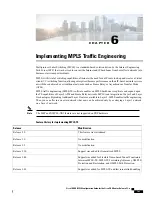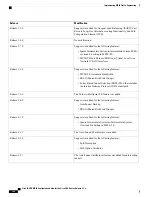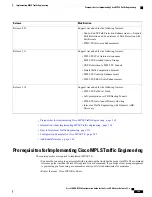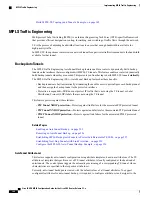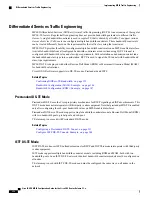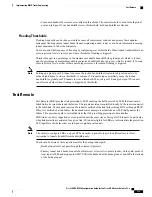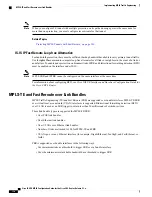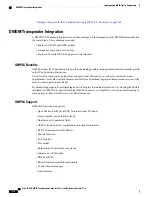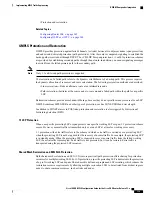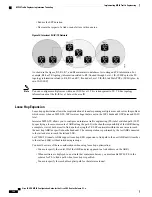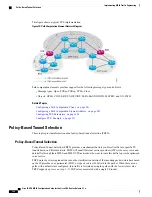
Ignore Intermediate System-to-Intermediate System Overload Bit Setting in
MPLS-TE
The Ignore Intermediate System-to-Intermediate System (IS-IS) overload bit avoidance feature allows network
administrators to prevent RSVP-TE label switched paths (LSPs) from being disabled, when a router in that
path has its Intermediate System-to-Intermediate System (IS-IS) overload bit set.
The IS-IS overload bit avoidance feature is activated using this command:
mpls traffic-eng path-selection ignore overload
The IS-IS overload bit avoidance feature is deactivated using the
no
form of this command:
no mpls traffic-eng path-selection ignore overload
When the IS-IS overload bit avoidance feature is activated, all nodes, including head nodes, mid nodes, and
tail nodes, with the overload bit set, are ignored. This means that they are still available for use with RSVP-TE
label switched paths (LSPs). This feature enables you to include an overloaded node in CSPF.
Enhancement Options of IS-IS OLA
You can restrict configuring IS-IS overload bit avoidance with the following enhancement options:
•
path-selection ignore overload head
The tunnels stay up if
set-overload-bit
is set by IS-IS on the head router. Ignores overload during CSPF
for LSPs originating from an overloaded node. In all other cases (mid, tail, or both), the tunnel stays
down.
•
path-selection ignore overload mid
The tunnels stay up if
set-overload-bit
is set by IS-IS on the mid router. Ignores overload during CSPF
for LSPs transiting from an overloaded node. In all other cases (head, tail, or both), the tunnel stays
down.
•
path-selection ignore overload tail
The tunnels stay up if
set-overload-bit
is set by IS-IS on the tail router. Ignores overload during CSPF
for LSPs terminating at an overloaded node. In all other cases (head, mid, or both), the tunnel stays
down.
•
path-selection ignore overload
The tunnels stay up irrespective of on which router the
set-overload-bit
is set by IS-IS.
When you do not select any of the options, including head nodes, mid nodes, and tail
nodes, you get a behavior that is applicable to all nodes. This behavior is backward
compatible in nature.
Note
For more information related to IS-IS overload avoidance related commands, see
Cisco IOS XR MPLS
Command Reference for the Cisco CRS Router
.
Related Topics
Configuring the Ignore Integrated IS-IS Overload Bit Setting in MPLS-TE, on page 240
Cisco IOS XR MPLS Configuration Guide for the Cisco CRS Router, Release 5.1.x
177
Implementing MPLS Traffic Engineering
Ignore Intermediate System-to-Intermediate System Overload Bit Setting in MPLS-TE

